Amy Sue Nathan's Blog: Women's Fiction Writers, page 31
May 7, 2014
The 10 Books On My Ideal Bookshelf
It’s almost one year since the launch of THE GLASS WIVES and one question I’ve been asked many times at readings, signings, and events is: WHAT IS YOUR FAVORITE BOOK?
This is a question I not only hesitate to answer, it’s a question I can’t answer. I don’t have a favorite book, yet this answer seems uncomely for an author. So I say: “Whatever I’m reading at the moment.” And that’s true. I only read books I like and I only finish books I really like, the ones where I can crawl inside the pages and make a momentary nest away from everything else. I knew books that were meaningful to me—but I didn’t have a list of favorites. Nor would my favorites necessarily be ones with scribble-worthy titles and trips to the book store. It was never important to me to have a list of favorite books. Not for myself or anyone else. There were just too many.
Then, for my fiftieth birthday I received a gift that changed that. The gift was that I could choose ten books and have a custom painting made of these books on my ideal bookshelf. Here’s a link to the artist’s website: http://www.idealbookshelf.com/. I had never heard of or seen anything like this before. And amidst a bevy of amazing birthday celebrations and gifts, this one was unique. And it was going to be hard work! I had to choose TEN books.
Perhaps someone else could ramble off ten, but I could not. I wanted these ten books to be meaningful to me in some IT’S-MY-FREAKING-FIFTIETH-BIRTHDAY-AND-PAINTINGS-LAST-FOREVER kind of way. I wanted these books to not impress anyone but me. Books that didn’t inspire anyone but me.
It took me about a month, maybe more, to decide. It was a serious charge, choosing these ten books. Not only did I want to do right by myself, I wanted to do right by the person who gifted this to me. This was not some willy-nilly point and pick. I wanted to have no regrets. Not to ever look at the painting and wish I’d chosen different titles. I made lists. I thought thoughts. (If you know me, neither of these surprise you!)
Now, a few months later, I can you, it was worth the effort, the lists, the pondering, the waiting. The photo doesn’t do it justice (plus it’s sorta sideways and complete with reflections). It’s 8″x10″ and I can see every brush stroke. I look at each book and know why it’s there, for me. The books might not be on anyone else’s ideal book shelf, but that’s what’s awesome. They don’t have to be! They don’t have to make sense to anyone else either, because to me, they make perfect sense!
Here are the ten books on my ideal bookshelf:
On Writing by Stephen King: This is the book that showed me my writing isn’t about me, it’s about the story. Huge lesson. Moved my desk into the corner, let the story come find me there. I can still picture the exact moment I realized this.
A Walk On The Beach by Joan Anderson: I mention this book in the back of THE GLASS WIVES. It’s my non-self-help, self-help book. It’s the only book I’ve ever read, cover-to-cover, more than once.
Cat’s Eye by Margaret Atwood: I read this book in the 80s and it reminded me of myself. I never forgot what it felt like to see myself inside a book.
Good In Bed by Jennifer Weiner: Though published to much acclaim in 2001, I didn’t read this until 2007 when I started writing fiction. There is a plot twist mid-book that grabbed me by the throat and spun me around in my writer pants. I hadn’t seen it coming yet everything made perfect sense. That’s what I want to do, I thought. It changed the way I saw fiction. It was my ah-ha moment.
The American Heritage Dictionary 1976: In 1977 as I graduated 7th grade from my elementary school (K-7) I was given the English Award. The principal said something like “There was no doubt among the teachers who should receive this award.” Then they called my name. And I received this dictionary.
The Glass Wives by me: Duh.
One Fish Two Fish Red Fish Blue Fish by Dr. Seuss: I read this book to my brother (6 1/2 years younger than me) and then to my kids. It was the book I used to hook my daughter into being a Seuss-lover like me!
Little Women by Louisa May Alcott: I always wanted to be Beth. Yes, Beth. Plus, there is a character named Amy. I have read the whole book once, but portions of this book dozens of times.
The Wednesday Sisters by Meg Waite Clayton: Like the Weiner book, Clayton’s book had a direct impact on my fiction writing. I read the Wednesday Sisters when it was published and just wanted to be one of their friends. The characters stayed with me for a long time after each time I read a few chapters, then again when I finished the whole book. I knew that I wanted to try to write a book that evoked exactly that feeling in others. I was not only inspired, but challenged. No book since has had the same level of impact.
Little House In The Big Woods by Laura Ingalls Wilder: What is there not to love about this entrance into the world of the Ingalls family? It was and remains my favorite of all the Little House books. I wasn’t able to pass on my love of Little House to my kids, but I can still see those illustrations in my head.
Which titles would make it onto your ideal book shelf?
Amy xo


May 5, 2014
Guest Post: How Author Brenda Janowitz Dusted Off An Old Idea And Wrote A New Adult Novel
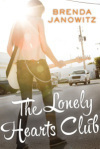 Publishing is like the weather in Chicago. Just wait a minute and it’ll change. No one knows that better than my friend, author Brenda Janowitz, who shares with us today how her newest novel was something she never thought would see the light of day, let alone a book shelf, and how she turned it upside down and inside out to meet a need in the market and a desire within herself to see the story published.
Publishing is like the weather in Chicago. Just wait a minute and it’ll change. No one knows that better than my friend, author Brenda Janowitz, who shares with us today how her newest novel was something she never thought would see the light of day, let alone a book shelf, and how she turned it upside down and inside out to meet a need in the market and a desire within herself to see the story published.
Tell us about the novels and idea you’ve tucked away, congratulate Brenda on today’s launch of her newest novel, THE LONELY HEARTS CLUB, and welcome her back to WFW!
Amy xo
How I Dusted Off An Old Idea And Wrote A New Adult Novel
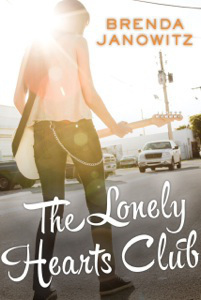 Every writer has one. Some writers have more than one. But me, I had a few.
Every writer has one. Some writers have more than one. But me, I had a few.
I’m talking about “trunk novels.” Those novel proposals, book ideas, and glimmers in the eye that just never went anywhere. Some writers have complete manuscripts just sitting in a desk drawer somewhere, just waiting to see the light of day.
I got the idea for THE LONELY HEARTS CLUB back in 2007, before my first novel was published. I was thinking about different ideas to pitch, other stories to tell now that my debut novel was about to come out. I wanted to create a protagonist who was in no way like the protagonist of my first novel. So no more lawyers, no more girly girls, and definitely a different voice.
I started with the idea of a rocker chick, a girl who lived in the downtown club scene and cared more about music than anything else in the world. My agent liked the idea, so I ran with it: I wrote 100 pages and an outline for the rest. We pitched it to my publisher, but they had other ideas in mind: they wanted a sequel to my debut novel.
Once my contract was up, we were free to shop it elsewhere. Only problem was, in the time since writing the proposal for THE LONELY HEARTS CLUB, the market had turned. Suddenly, “chick lit” was a dirty word, and editors were scared of acquiring anything that resembled it. So, LONELY HEARTS went into the trunk, and I began work on what would become my third novel, RECIPE FOR A HAPPY LIFE.
But then a funny thing happened. The market changed again. E-books were on fire, and a new market was born.
An old friend of mine, the wonderful Jason Pinter, contacted me about a new indie publishing house he was creating. Polis Books would be e-book only, and he would be establishing real partnerships with his authors. He was interested in creating a women’s fiction arm, so I told him about my trunk novel.
The rest, as they say, is history. I took THE LONELY HEARTS CLUB out of the trunk, and started writing again. I’d been reading a lot of New Adult novels—novels that fill the space between the Young Adult market and the older Women’s Fiction crowd—so I lowered the protagonist’s age to twenty-two. Working off my old outline, I finished it, and Polis Books will be publishing THE LONELY HEARTS CLUB on May 6th.
I’m excited about this novel. And scared. And a whole host of other things, too. There’s something thrilling about taking an old novel out of the trunk and dusting it off. There’s also something terrifying—what if it should never have come out?!
I’ll figure that out on today I suppose. And then, who knows, maybe it will inspire me to dig out some other story ideas that I never finished….
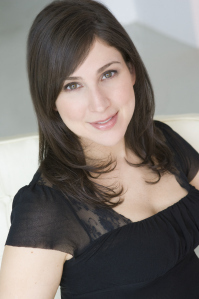 Brenda is the author of RECIPE FOR A HAPPY LIFE, JACK WITH A TWIST, and SCOT ON THE ROCKS. Her fourth novel, THE LONELY HEARTS CLUB, will be published by Polis Books on May 6th. Her work has also also appeared in the New York Post and Publisher’s Weekly. You can find Brenda on Facebook or on Twitter at @BrendaJanowitz.
Brenda is the author of RECIPE FOR A HAPPY LIFE, JACK WITH A TWIST, and SCOT ON THE ROCKS. Her fourth novel, THE LONELY HEARTS CLUB, will be published by Polis Books on May 6th. Her work has also also appeared in the New York Post and Publisher’s Weekly. You can find Brenda on Facebook or on Twitter at @BrendaJanowitz.Read more about THE LONELY HEARTS CLUB here .
Brenda’s website is: www.brendajanowitz.com
April 29, 2014
Guest Post: Bringing Out-Of-Print Novels Back To Women’s Fiction Readers By Ian Skillicorn
Yesterday, on Harper Lee’s 88th birthday, she announced that To Kill A Mockingbird would be available as an ebook on July 8th. That’s a big deal! And while a little different (because that’s To Kill A Mockingbird, after all) i n this era of digital re-publishing, she’s not the only author able to be introduced to readers again via ebook, and exactly what we’re talking about today on WFW (timing is everything, you know?).
Today in an different kind of guest post, Ian Skillicorn, introduces us to Catherine Gaskin, and the business of bringing out-of-print novels back to readers. Enjoy! (And I totally want my next author photo to look like Catherine Gaskin’s!)
Amy xo
When Old Books Are New Again: Introducing Catherine Gaskin
by Ian Skillicorn
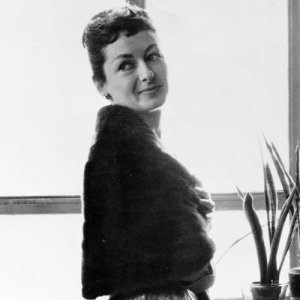 When I started my fiction imprint, Corazon Books, I knew that bringing out-of-print novels back to the reading public’s attention would be an important part of my plans. The success of the first reissued titles (including an Amazon Top Ten in the UK) showed that readers were interested in digital editions of previously published books.
When I started my fiction imprint, Corazon Books, I knew that bringing out-of-print novels back to the reading public’s attention would be an important part of my plans. The success of the first reissued titles (including an Amazon Top Ten in the UK) showed that readers were interested in digital editions of previously published books.
Of course, there is a lot of great new writing being published at the moment, but I wanted to focus initially on those works which had given pleasure to previous generations, yet were now largely forgotten. One author I was particularly interested in was Catherine Gaskin. She lived through most of the twentieth century, and had a fascinating life as well as a very successful writing career. Thanks to the advent of digital publishing it was now possible to introduce her to a new generation of readers. I found this a very exciting prospect.
Catherine Gaskin was born in Ireland, but raised in Australia. She became a bestselling writer at the age of just seventeen, having written her first novel in the mornings before going to school. Over five decades her books sold forty million copies worldwide, and she became known as the ‘Queen of Storytellers’. I remember my mother and grandmothers reading her novels, and later on I picked up the copies I came across at home and enjoyed them myself.
When she died in 2009, Catherine left the copyrights in her works to the Society of Authors in the UK. They licensed Corazon Books to publish the first digital edition of her work, The Property of a Gentleman. I set about researching Catherine’s life, so that I could tell readers more about the author behind the work.
Catherine was so successful that it wasn’t difficult to find newspaper and magazine cuttings about her. I spent many days at the Westminster Reference Library in central London, following her path from school-girl bestseller in Australia, to her arrival in England, where she met her future husband (a US television executive) on a blind date. Married life was spent in New York, then the Virgin Islands, Ireland, and the Isle of Man. She returned to Australia, as a widow, for the last ten years of her life. During my research, I was fascinated to learn how books and authors were promoted in years gone by ‒ some of Catherine’s books were serialised over many months in women’s magazines, something that doesn’t happen these days.
I also had the chance to listen to Catherine talking about her life and career. In 1980 she was interviewed for a popular BBC radio programme, Desert Island Discs, in which people of note choose eight pieces of music they would take with them if stranded on a desert island. The recording is available on the BBC’s website, and it was a fantastic opportunity to hear Catherine’s voice, and to discover more about her, in her own words.
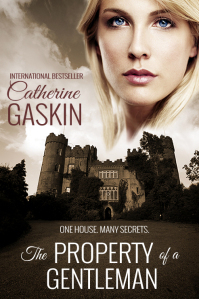 Since publishing The Property of a Gentleman I have written articles and blog posts about the novel, and Catherine, and hope that my enthusiasm will encourage readers to try her work. One interesting challenge was how best to describe the book. The Property of a Gentleman is set in Thirlbeck, the remote ancestral home of an earl in England’s Lake District, and in a large auction house in London. It is the story of Jo Roswell, a young antiques expert, who becomes involved with the residents of Thirlbeck. She is also captivated by the tale of a Juana, a Spanish aristocrat who met an untimely end many centuries earlier. Over the course of the novel, Jo uncovers secrets from both the past and present. The book has many gothic elements, and it also includes a romance, but it is does not strictly fit into the gothic romance or romance genres. Events from the sixteenth century are key to the plot, but the book takes place in the 1970s, so it cannot be called historical fiction either. Some readers have likened it to Daphne du Maurier’s Rebecca, and in truth I’m not sure there is a description that could give complete justice to the scope of the book. Let’s say that The Property of a Gentleman is essentially Jo’s journey of self-discovery.
Since publishing The Property of a Gentleman I have written articles and blog posts about the novel, and Catherine, and hope that my enthusiasm will encourage readers to try her work. One interesting challenge was how best to describe the book. The Property of a Gentleman is set in Thirlbeck, the remote ancestral home of an earl in England’s Lake District, and in a large auction house in London. It is the story of Jo Roswell, a young antiques expert, who becomes involved with the residents of Thirlbeck. She is also captivated by the tale of a Juana, a Spanish aristocrat who met an untimely end many centuries earlier. Over the course of the novel, Jo uncovers secrets from both the past and present. The book has many gothic elements, and it also includes a romance, but it is does not strictly fit into the gothic romance or romance genres. Events from the sixteenth century are key to the plot, but the book takes place in the 1970s, so it cannot be called historical fiction either. Some readers have likened it to Daphne du Maurier’s Rebecca, and in truth I’m not sure there is a description that could give complete justice to the scope of the book. Let’s say that The Property of a Gentleman is essentially Jo’s journey of self-discovery.
The process of publishing and promoting The Property of a Gentleman has been very fulfilling and rewarding for me. I consider it a real privilege to be able to introduce new readers to Catherine Gaskin and her work.
Corazon Books continues to grow. This spring we are bringing out the first print editions of some titles, and we have been supporting new writing through a number of competitions, including one for previously unpublished authors over the age of fifty. We will also be publishing new editions of further out-of-print titles later this year. There are still many stories waiting for their moment to be reintroduced to readers.
You can find out more about Catherine Gaskin at http://www.catherinegaskin.com
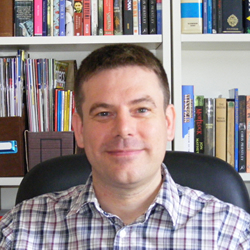 Ian Skillicorn established the women’s fiction imprint, Corazon Books, in 2012. Its aim is simple – to bring readers great stories with heart. Recent successes include a Top 10 bestseller on Amazon, and Top 10s in the Women Writers & Fiction, Short Stories and Medical Fiction charts.
Ian Skillicorn established the women’s fiction imprint, Corazon Books, in 2012. Its aim is simple – to bring readers great stories with heart. Recent successes include a Top 10 bestseller on Amazon, and Top 10s in the Women Writers & Fiction, Short Stories and Medical Fiction charts.
Corazon Books publishes new fiction and reissues of popular out-of-print works. The imprint also supports and encourages new writers with a number of writing competitions held throughout each year. Full details can be found at http://www.greatstorieswithheart.com
Ian is also an audio producer with two decades’ experience of producing CDs, audio programmes and podcasts. He is the founder of National Short Story Week in the UK, which is celebrated by libraries and schools nationwide, as well as by publishers, reading and writing organisations, and countless individual writers, readers and listeners.
The Property Gentleman by Catherine Gaskin
Amazon US: http://www.amazon.com/The-Property-Gentleman-Catherine-Gaskin-ebook/dp/B00GM03K3G/
Amazon UK: http://www.amazon.co.uk/The-Property-Gentleman-Catherine-Gaskin-ebook/dp/B00GM03K3G/
Kobo: http://store.kobobooks.com/en-gb/books/the-property-of-a-gentleman-2/


April 24, 2014
Guest Post: Is Your Story Carved In Stone? By Author Sharon Maas
Today on WFW author Sharon Maas is back (YAY!) to share with us a lesson she learned while traveling in India. Her words, photos, and video have transporting and transformative powers. (Don’t say I never took you anywhere, k?)
Amy xo
Click to view slideshow.
Not Carved in Stone: Excavating for a Story
By Sharon Maas
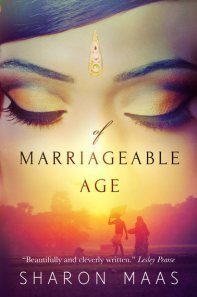 Last February I spent three wonderful weeks in South India. The best part of my morning routine was a walk up a nearby mountain to visit a little ashram where I could sit and meditate in silence. On the way up, dotted here and there along the cobblestone path, sat a few of the local sculptors, selling their work and creating their next piece. Always I stopped to watch, fascinated.
Last February I spent three wonderful weeks in South India. The best part of my morning routine was a walk up a nearby mountain to visit a little ashram where I could sit and meditate in silence. On the way up, dotted here and there along the cobblestone path, sat a few of the local sculptors, selling their work and creating their next piece. Always I stopped to watch, fascinated.
These were simple men. They sat on the bare earth, their basic tools laid out before them. In one hand they held the stone they were working on, either soapstone or marble; in the other hand was the chisel. With all the patience in the world they carved away, scraping and sculpting to mould from the stone their works of art: effigies of gods, or elephants with babies in their innards, or ornate lampshades, candlesticks, incense holders, jewelery boxes, and, in one case, a snarling tiger. Each piece was perfectly formed.
They had no blueprint or model to work from. Each sculptor knew innately, with an uncanny surety and minute precision, how much to remove and at what angle, and did so as naturally and confidently as you and I would tap a keyboard. Sometimes he held the stone with his toes, and hammered (hammered!) away to get it right (see photo). A millimeter to the left or right would have ruined the finished product; but it never did. Symmetry and balance flowed from those sculptor hands, perfection in stone. It was as if the final product was already in the stone, waiting for the sculptor’s thought, the chisel’s touch. Some of these artworks may have lacked the sophistication of their expensive lookalikes in the boutiques of Chennai Airport, but each one was a miracle in stone. I was spellbound, hooked. I was probably their best customer in those three weeks; I bought several pieces to bring home as gifts.
I also brought back new inspiration, new insight into my own work as a writer.
“It’s not carved in stone!” is one of the maxims that comfort me as I write my first draft. It’s all right to make mistakes, as mistakes can be corrected in second, third and fourth drafts. Words are not stone; a clumsy word can be improved on, typos put right, ham-fisted scenes rewritten, dialogue made snappier, characters made more evil. I can chisel away at a story as much as I want; I can add new scenes if necessary, or remove ones that don’t work. I can polish, mould, move story elements around; and one day, hopefully, the story will be as perfect as my ability allows. There is no absolute perfection in storytelling; a different choice of words would produce a different story, or a different slant to the story, or a new nuance to the story. That is the beauty of writing; it is fluid, flexible, not carved in stone.
And yet I brought with me the insight that indeed, each story has its own innate truth, a form it has to be, a form it wants to be and needs to be – and that as surely as the Indian sculptor digs from a formless stone a beautiful Buddha’s head, so it is my task to dig within myself to find the inherent truth of each story I create. That takes time, and experience — and method.
In February I wrote a guest post here on “writing from the seat of my pants”. Very often, this kind of writing is dismissed as shallow, random or chaotic, and perhaps in some cases it is. But it doesn’t have to be. Done properly there is, or should be, skill involved, the skill of digging deep inside to know, beyond a shadow of a doubt, what the story is: its truth, which is the truth of its creator, the writer.
I was 49 when I started my writing career. I had no confidence in my writing abilities, no trust in the stories within me, or I would have started at a much younger age. I didn’t even know that stories were there in me to be written. But then I discovered Dorothea Brande’s classic Becoming a Writer, first published in 1934 and still in print.
Brande opened my eyes. Brande believed that hidden within the unconscious mind is an intelligence that must be tapped by the conscious, allowing it, the unconscious, to freely flow, “bringing at demand all the treasures of memory, all the emotions, incidents, scenes, intimations of character and relationship which it has stored away in its depths. The role of the conscious mind is to control, combine and discriminate between these materials without hampering the unconscious flow.”
In the “born writer” Brande believed, this process takes place smoothly and rapidly; by some fortunate accident of temperament or education the naturally gifted writer can put that unconscious flow completely to the service of reasonable intention, whether or not he or she is aware of doing so. There is a magic to writing, says Brande; and it can be learned.
For me the book was a turning point. She put into my hands the basic tools for excavating my own depths, for finding that hidden lump of story buried within me, and carving out its truth into a readable form, a process that indeed sometimes feels like magic.
I am basically a shy, elusive and clumsy person, and so imagine my joy when I read the following words:
The unconscious is shy, elusive and unwieldy, but it is possible to learn to tap it at will, and even to direct it. The conscious mind is meddlesome, opinionated and arrogant, but it can be made subservient to the inborn talent through training.
Brande taught me to trust the unconscious mind, to know that it is the repository of all the ingredients that make good stories. She gave me clues, hints to the many ways and means of tapping into that source. This turned out to be the method that worked for me, and worked well. In the 14 years since reading that book I have written seven novels; three were published by HarperCollins, and two became French bestsellers. The others are waiting in line for publication, and two more are waiting to be written. To any writer who struggles to find their story, who feel that his or her problem is not with the actual craft of writing, but antecedent to that, with the finding of a story to tell; anyone who finds the actual storytelling the hardest part of writing, that inspiration has dried up, that writer’s block has set in, that his or her story is hidden away behind a locked door I would say: read Brande’s book. It just might provide a key.
At present I am revising a novel I wrote in 2004, a novel which didn’t find an agent or a publisher back then. I thought it needed just a spit and a polish, but now, ten years later, I realised that the flaw ran much deeper. Something was missing in that first draft, a vital dimension to the story without which it fell flat.
Fresh from India and inspired by the work of those Indian sculptors, I finally found that missing dimension. I found it because I’m now a better, more mature writer, and can dig deeper. I’m a miner and a sculptor. And I am more thankful than ever that stories are not carved in stone.
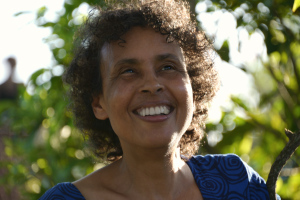 Sharon Maas was born in Georgetown, Guyana in 1951, and spent many childhood hours either curled up behind a novel or writing her own adventure stories. After a few years as a reporter with the Guyana Graphic in Georgetown she spent some time travelling in South America and overland to India. She ended up in Germany, married with two children, and now has a day job as a social worker in a hospital. She writes novels in her free time.
Sharon Maas was born in Georgetown, Guyana in 1951, and spent many childhood hours either curled up behind a novel or writing her own adventure stories. After a few years as a reporter with the Guyana Graphic in Georgetown she spent some time travelling in South America and overland to India. She ended up in Germany, married with two children, and now has a day job as a social worker in a hospital. She writes novels in her free time.
Learn more about OF MARRIAGEABLE AGE here.
Learn more about Sharon and her books here.


April 21, 2014
Guest Post: Mixing Food Into Fiction by Author Katharine Britton
 Gosh, it’s been a while! A holiday and a getaway got in the way, but really, they didn’t. Stepping aside makes it better when you come back. And, can’t write if you don’t live life, right? And food is part of living…so…t
oday author Katharine Britton talks about food in fiction! Coming off the spring religious holiday season, we’re all probably a little bit stuffed (matzah pizza will do that to ya) but it’s a good time to think about how we use food in our writing. THE GLASS WIVES readers told me they came away hungry. In FINDING IZZY LANE I incorporate much less “real” food, but the main character, Izzy, has a lot of fond food memories. I’d like use Michigan as a setting in a novel so I collected some menus and magazines on a writer-getaway there last week. Oh, yes, and there was wine tasting of Michigan wines. That was TOTALLY research. Yep.
Gosh, it’s been a while! A holiday and a getaway got in the way, but really, they didn’t. Stepping aside makes it better when you come back. And, can’t write if you don’t live life, right? And food is part of living…so…t
oday author Katharine Britton talks about food in fiction! Coming off the spring religious holiday season, we’re all probably a little bit stuffed (matzah pizza will do that to ya) but it’s a good time to think about how we use food in our writing. THE GLASS WIVES readers told me they came away hungry. In FINDING IZZY LANE I incorporate much less “real” food, but the main character, Izzy, has a lot of fond food memories. I’d like use Michigan as a setting in a novel so I collected some menus and magazines on a writer-getaway there last week. Oh, yes, and there was wine tasting of Michigan wines. That was TOTALLY research. Yep.
Share some of your ideas and thoughts in the comments and—please welcome our friend Katharine Britton back to WFW! (And be sure to check out the trailers for Katharine’s books at the end of the post–maybe grab a snack first!)
Amy xo
Cooking Your Books
 “You are what you eat,” the saying goes. In The House of Sand and Fog, Andre Dubus III’s central character lives for what seems like weeks on nothing but Diet Coke and cigarettes. Sue Grafton’s investigator Kinsey Millhone doesn’t like to cook, but she does like to eat: A hot, hard-boiled egg sandwich served on a paper towel (no cleanup) is a favorite meal. Robert Parker describes in delectable detail the meals Spencer makes for himself after collaring a criminal and taking a long run along the Charles River. Sharing a meal with a character can provide valuable insights¾and be a memorable experience¾for readers and authors.
“You are what you eat,” the saying goes. In The House of Sand and Fog, Andre Dubus III’s central character lives for what seems like weeks on nothing but Diet Coke and cigarettes. Sue Grafton’s investigator Kinsey Millhone doesn’t like to cook, but she does like to eat: A hot, hard-boiled egg sandwich served on a paper towel (no cleanup) is a favorite meal. Robert Parker describes in delectable detail the meals Spencer makes for himself after collaring a criminal and taking a long run along the Charles River. Sharing a meal with a character can provide valuable insights¾and be a memorable experience¾for readers and authors.
I love to read cookbooks, recipes in magazine, even descriptions of dishes on menus. I’m addicted to Cupcake Wars and The Barefoot Contessa. If you’re having a dinner party, call me. I’ll plan your menu. Just don’t ask me to cook. I’m tired of shopping, chopping, marinating, slicing, whisking, sautéing, grilling, broiling, and baking.
Writing about cooking involves none of these. Nor is there any shopping, no messy cleanup, no temptation to snack during the process. There’s nothing to sample when you’ve finished a scene, so no self-discipline is required. Once upon a time, I baked bread. And then I ate bread. A lot of bread. There is almost nothing on earth as good as a thick slice of freshly baked, lightly sweetened, whole grain bread slathered with butter. Unless it might be a warm chocolate-chip cookie, the middle still soft and gooey…
Dialogue, writers are told, should never be “on the nose.” One way to accomplish this is to give characters something to do while they’re talking. Why not let them cook? The dance that takes place between two people preparing a meal can reveal a lot. Are they in their ancestral home, at his loft apartment, camping? Are they both cooking, or is one cooking and another simply watching and commenting? What is he or she making? Oyster stew? Lentil loaf with bulgur and tofu? Corn dogs? Each can reveal a lot about character, setting, and plot.
A character can be a good cook or very bad, love it or hate it, do it by choice or by default, follow a recipe to the letter, or read a recipe and then toss it aside and start cooking. Are the results fabulous or inedible? Does a character have one menu that she serves at every dinner party? How do her guests feel about this?
As a literary device, food has few equals. It is visually pleasing (or not), has nutritional value (or not). We all need it, but we don’t all have enough. Food has texture, fragrance, color, shape, and size. You buy it, cook it, and eat it¾alone or with others. Some people live to eat; others eat to live. Food has historical, religious, and cultural connections. Traditions develop around it: turkey at Thanksgiving, latkes at Hanukkah, ham at Easter, matzo balls at Passover, barbeques on the Fourth of July, chocolate at Valentine’s Day, fasting at Ramadan. Our diet can extend our life or shorten it. We can dine in or eat out and choose fine dining or a picnic in the rough. Everyone eats, and culinary tastes vary widely.
Food and its preparation offer endless opportunities for writers. Scenes that involve cooking allow characters to develop dimension and relationships to evolve. They also allow writers to infuse plots and settings with meaty metaphors and redolent kitchens, not to mention indulging in the guilty pleasure of reading recipes and calling it research.
Is there food in your writing? If not, what’s your favorite hands-on research that makes it into your stories? I
Below is my current favorite recipe. (From Dishing Up Vermont.) Let me know how it turns out!
Crostini with Fresh Figs, Blue Cheese, Sage, and Balsamic Vinegar
1 crusty baguette, cut into 24, ½ inch slices
¼ cup extra -virgin olive oil
1 pound fresh ripe figs, cut into quarters (about 2 cups)
2 tablespoons balsamic vinegar, preferably fig balsamic
1 tablespoon finely chopped fresh sage
Kosher salt and freshly ground black pepper
5 ½ ounces blue cheese (preferably Jasper Hill Bayley Hazen) about ¾ cups
Preheat oven to 400
Arrange the baguette slices in a single layer on a rimmed baking sheet, brush them with olive oil, and bake until lightly browned a crisped, 10-14 minutes. Set aside until cool.
Lightly toss the figs with the vinegar and sage in a medium bowl,. Season to taste with salt and pepper. Spread the cheese on the baguette slices and top with the figs. Serve immediately.
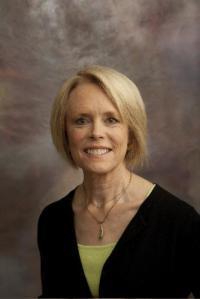 Katharine Britton’s first novel, HER SISTER’S SHADOW, was published in 2011, by Berkley Books (Penguin, USA). Her second novel, LITTLE ISLAND, came out in September of 2013, from the same publisher. She has a Master’s degree in Creative Writing from Dartmouth College, and a Master’s in Education from the University of Vermont. Her screenplay, “Goodbye Don’t Mean Gone,” was a Moondance Film Festival winner and a finalist in the New England Women in Film and Television contest. Katharine is a member of the League of Vermont Writers, NEIBA, and The New Hampshire Writer’s Project. She has taught at ILEAD, Colby-Sawyer College*, and The Writer’s Center in White River Junction, Vermont. Beginning in 2014, she will be reviewing books for the New York Journal of Books.
Katharine Britton’s first novel, HER SISTER’S SHADOW, was published in 2011, by Berkley Books (Penguin, USA). Her second novel, LITTLE ISLAND, came out in September of 2013, from the same publisher. She has a Master’s degree in Creative Writing from Dartmouth College, and a Master’s in Education from the University of Vermont. Her screenplay, “Goodbye Don’t Mean Gone,” was a Moondance Film Festival winner and a finalist in the New England Women in Film and Television contest. Katharine is a member of the League of Vermont Writers, NEIBA, and The New Hampshire Writer’s Project. She has taught at ILEAD, Colby-Sawyer College*, and The Writer’s Center in White River Junction, Vermont. Beginning in 2014, she will be reviewing books for the New York Journal of Books.
When not at her desk, Katharine can often be found in her Norwich garden, waging a non-toxic war against the slugs, snails, deer, woodchucks, chipmunks, moles, voles, and beetles with whom she shares her yard. Katharine’s defense consists mainly of hand-wringing after the fact.
Visit Katharine’s website: http://www.katharinebritton.com/


April 10, 2014
Guest Post: From Writing Facts To Writing Fiction by Darlene Deluca
I remember trying my typing fingers at fiction in 2007 and wondering how I was going to just make things up. It was foreign to me, this concept. I’d been a journalist, a corporate writer, an essayist, then dabbled in the brand new world of blogging. All true writing, all authentic, all me. Now I had to put the five Ws and and the H (Who, What, Where, When, Why, and How) aside, at least sometimes?
Indeed!
Today we have a guest post from Darlene Deluca who did the same thing. While I continued writing both fact and fiction, she set aside her corporate life to embark on fiction writing alone. Brave (and lucky) Darlene is joining us to day to share her journey.
Please welcome Darlene Deluca to Women’s Fiction Writers!
Amy xo
From Writing Facts To Writing Fiction
by Darlene Deluca
No Fluff.
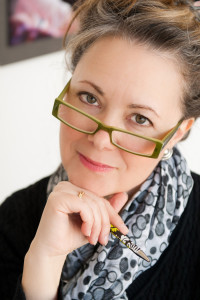
Darlene Deluca
The motto of a journalist, those two words used to hang in large bold letters on a sign in a colleague’s office where we worked together in corporate communications. That sign was a constant reminder. For a journalist, it’s all about the facts. Who, what, when, where, why and how. No need to elaborate. No space for unnecessary words. Get to the point, and make it as clear and concise as possible.
In J-school, the no-fluff rule was hammered into my brain. The exception was the occasional feature article or magazine story where I was able to include a bit of “human interest.” When I moved from being a newspaper reporter to corporate communications, things changed a little. There were employee magazines that featured personal profiles in addition to stories about changes to employee benefits or new product releases. Those offered more variety, the opportunity to go beyond who-what-when – to, yes, add some “fluff.”
Turned out, those articles were always more fun – more fun to interview and research, and way more fun to write. There is certainly skill in being able to take a heap of information, often from a variety of sources, and whittle it into a concise, snappy article that’s easy for readers to understand in only a few minutes. It takes a different kind of talent to widen the lens and bring more to the story. More depth, more emotion, more human interest.
And that brings me to writing fiction.
I left corporate America a few years ago and set out to give voice to some of the stories rattling around in my head, to try my hand at fiction. Never planned to write fiction, but the timing worked for me, and once I got started, the new possibilities energized me. I could use my basic writing skills, but in new and different ways. I could connect with readers on a different level.
Some things haven’t changed. The bible of a journalist is the AP Style Guide. I still have it handy when I write, along with several other reference books and materials. I still want to be grammatically correct. Yes, I still use a real, printed Merriam-Webster dictionary. But now I have other resources at my fingertips – a thesaurus of emotions, a book about putting the “fire” in fiction, notes from workshops on building scenes and creating characters. And I still do a lot of research because I want my stories to feel real and authentic. For my most recent release, I researched alcoholism and recovery. For my current work-in-progress, I’ve learned about surrogacy laws and medical procedures.
Switching from journalistic style to fiction has been quite liberating. Emotion? Embellishment? Description? Oh, my! It’s such a departure, that my critique partners often have to push me to loosen up even more. Add more ambiance. Give more details. Set the mood. Show, don’t tell. Gulp. You mean use extra words?
Yes! Not only do I get to expand in descriptive ways, I can go beyond the facts. Even better, I can make up the facts.
Sometimes I sit at my computer crafting a scene, and I have to smile. I. Am. Making. Stuff. Up. I’m adding expression and emotion. A reviewer recently wrote this about my newest novel: “As the reader, I was drawn completely into the emotions of Claire. At one point in the story…my chest felt tight. I felt anger and shame….I empathized with Claire….I felt her confusion, pain, and fear”.
I cried when I read that. It’s what writing fiction is all about.
![Pageflex Persona [document: PRS0000026_00031]](https://i.gr-assets.com/images/S/compressed.photo.goodreads.com/hostedimages/1397214836i/9247975.jpg) Darlene Deluca writes women’s fiction and contemporary romance, and likes to explore relationships – what brings people together or keeps them apart. Her characters seem like real people with real issues that readers can relate to.
Darlene Deluca writes women’s fiction and contemporary romance, and likes to explore relationships – what brings people together or keeps them apart. Her characters seem like real people with real issues that readers can relate to.
Darlene released her debut novel, Unexpected Legacy, in January, 2013, and it advanced to the quarter-finals in Amazon’s Breakthrough Novel Award. Her second novel, Meetings of Chance, is a contemporary romance. Last August, she released the first book of a small-town trilogy, The Storm Within. The series focuses on the bonds of friendship, and family relationships.
Darlene has been a reader and writer since childhood. She holds a degree in Journalism, and is the go-to person when her kids need help with an English paper, resume or essay. (Math, not so much.) Darlene started her writing career as a newspaper reporter, and later moved into corporate communications. “Writing fiction is a lot more fun,” she says. “It’s liberating. I can make up the people, places and the pertinent facts.”
She has a daughter who just graduated from college, and a son who’s a senior in high school. Darlene tolerates living in the Midwest (that’s where the fam is), but when the temperature plummets and the ground turns white, she often longs for a distant sunny beach.
http://www.amazon.com/s/ref=nb_sb_noss?url=search-alias%3Dstripbooks&field-keywords=Darlene%20Deluca
http://www.goodreads.com/author/show/6879809.Darlene_Deluca
http://www.threewritersofromance.com/all-about-darlene.html
http://www.facebook.com/pages/Darlene-Deluca/282385088481413


April 8, 2014
Guest Post by Debut Author Lindsey J. Palmer: Why I Set My Novel At A Women’s Magazine (even after The Devil Wears Prada)
 When you’re writing a novel do you choose the setting—or does the setting choose you? When you read about debut author Lindsey J. Palmer’s decision to write about the world of women’s magazines, you’ll see that in her case (and in many) a setting just begs for a story. How can we, as writers, resist?
When you’re writing a novel do you choose the setting—or does the setting choose you? When you read about debut author Lindsey J. Palmer’s decision to write about the world of women’s magazines, you’ll see that in her case (and in many) a setting just begs for a story. How can we, as writers, resist?
Please welcome Lindsey J. Palmer to Women’s Fiction Writers!
Amy xo
Why I Set My Novel At A Women’s Magazine (even after The Devil Wears Prada)
By Lindsey J. Palmer
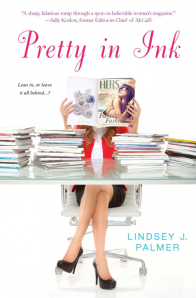 Any workplace is a world unto itself—I first learned this waiting tables in high school when I quickly deduced how to steer clear of the leering dish-washer, which managers let you sneak out pints of ice cream and which ones didn’t, and that if the surly owner showed up my skirt better be regulation-length. Now that I’m employed by one of the country’s biggest bureaucracies (the NYC Department of Education), I understand it better than ever: Each workplace has its own laws—both official and unofficial—plus its own social code, hierarchy, vibe, and of course population (with the implicit or sometimes not-so-implicit threat of being booted out if you don’t get with the system).
Any workplace is a world unto itself—I first learned this waiting tables in high school when I quickly deduced how to steer clear of the leering dish-washer, which managers let you sneak out pints of ice cream and which ones didn’t, and that if the surly owner showed up my skirt better be regulation-length. Now that I’m employed by one of the country’s biggest bureaucracies (the NYC Department of Education), I understand it better than ever: Each workplace has its own laws—both official and unofficial—plus its own social code, hierarchy, vibe, and of course population (with the implicit or sometimes not-so-implicit threat of being booted out if you don’t get with the system).
For this reason I’ve always loved a workplace story, on-screen (Parks and Recreation, Veep, The Office) or on the page (Then We Came to the End, Nickel and Dimed). And after toiling for seven years in the editorial departments of women’s magazines—at Glamour, then Redbook, then Self—I not only felt I knew this world like a native, I also believed it would be an ideal backdrop for a novel.
The World of Women’s Magazines is by turns a blast and a bellyache, glamorous and glamour-less, girlfriend-y and cutthroat. The mingling of ambitious Manhattan women in their 20s, 30s and early 40s (plus the occasional gay man, and the rarer straight man) seems custom-made for conflict. Task that cast with putting out a product that’s supposed to be fun but not frothy, intelligent but not cerebral, unique but not niche, edgy but not offensive, opinionated but not political, inclusive but not bland, and a hundred other seemingly impossible requirements—oh, and that will sell, sell, SELL—and the resulting atmosphere is fresh and vibrant at the best of times, and frantic and volatile at the worst. Plus, there are the perks—the events at Manhattan’s chicest venues (I dined at both Per Se and The SoHo Club within my first week in the industry); the famous “free table” where editors nab everything from hardcover books to designer clothing, all gratis; the sleek, sun-drenched offices and gourmet cafeterias with fresh sushi and seasonal, local fare; the beauty sales featuring luxury lotions and potions for $1 a pop; the occasional hobnobbing with celebs; and the photo shoots and TV segments, plus the accompanying hair and makeup. Lastly, women’s magazines are an easy target, blamed for every eating disorder, self-esteem problem, and societal woe. All of these factors combined? What a perfect backdrop for a page-turner, I thought.
But—and this is the question I often got when I told people I was writing a novel that took place at a women’s magazine—wasn’t this already done in The Devil Wears Prada? Well, not exactly. Listen, I enjoyed The Devil Wears Prada as much as the next girl (in fact, I read the entire thing in one sitting the day before my first and last interview at Vogue, wearing, I kid you not, head-to-toe The Gap). But I had a different story to tell, set in an entirely different era of publishing; whereas Prada came out in 2003 and the movie followed in 2006, my novel, Pretty in Ink, is a post-2008 story, one set in the era of economic meltdown and recessionary downsizing. Prada captured women’s magazines at the height of their glitz and glory; in my book, the editor-in-chief gets fired on the very first page, setting in motion the kind of upheaval and staff reshuffling that’ll be familiar to anyone who’s collected a paycheck (or tried to) in the past five years. In Magazine Land, the recession felt magnified because competition from blogs and webzines and brands’ own free online content had been cannibalizing print magazines for years.
The tale I tell in Pretty in Ink is one similar to what I—and so many others working in the industry—have lived through: In hopes of reviving a brand when sales are down, a new head honcho is brought in to make over the magazine, and often the staff, as well. One of the ways I made it through that existence of complete chaos, round-the-clock-work-days, and constant fear of getting the axe was pretending I was a character in a novel: What an interesting conflict, I’d think, trying to imagine I was taking vicarious pleasure in a fictional protagonist’s troubles instead of living my own life, I wonder how it’ll get resolved!
Eventually, I started taking notes. A couple of years later I’ve fled the industry for the high school classroom (another setting ripe for drama, but that’s a different post entirely), and I’ve done my best to transfer my experiences (plus a lot of imagination) into fiction. I do miss the setting of women’s magazines—particularly the free table—but now at least I can revisit it on the pages I’ve written.
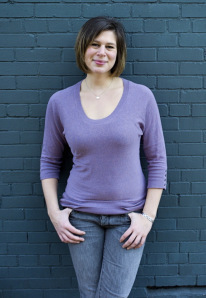 Lindsey J. Palmer worked as a professional writer and editor in the magazine industry for seven years, most recently as Features Editor at Self, and previously at Redbook and Glamour. A graduate of the University of Pennsylvania, she earned a Master of Arts in English Education from Teachers College, Columbia University, and currently teaches 12th grade English, A.P. Literature, and Creative Writing at NEST+m in Manhattan. Lindsey lives in Brooklyn. Visit her at http://www.lindseyjpalmer.com
Lindsey J. Palmer worked as a professional writer and editor in the magazine industry for seven years, most recently as Features Editor at Self, and previously at Redbook and Glamour. A graduate of the University of Pennsylvania, she earned a Master of Arts in English Education from Teachers College, Columbia University, and currently teaches 12th grade English, A.P. Literature, and Creative Writing at NEST+m in Manhattan. Lindsey lives in Brooklyn. Visit her at http://www.lindseyjpalmer.com
http://www.LindseyJPalmer.com
http://www.facebook.com/lindseyjpalmerauthor


April 6, 2014
Book Cover Reveal For Historical Fiction Author Renee Rosen’s “WHAT THE LADY WANTS”
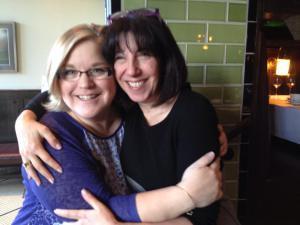 There is undeniable joy to having in-real-life friends who are authors. Hugs and wine are just part of it. I am always so happy to share in my friends’ triumphs (tribulation sharing builds the bond, but it’s not joyful).Truly, what more could a writer want than to be part of someone else’s story?
There is undeniable joy to having in-real-life friends who are authors. Hugs and wine are just part of it. I am always so happy to share in my friends’ triumphs (tribulation sharing builds the bond, but it’s not joyful).Truly, what more could a writer want than to be part of someone else’s story?
That’s why today I’m thrilled to present the cover for my friend, Renee Rosen’s, cover for her next novel, WHAT THE LADY WANTS.
When this photo of us was taken, just a few weeks ago at our favorite meeting place in Chicago, there were still tweaks and decisions to be made, there was still no official date she could share the cover. Now it’s here!
Renee is also the author of DOLLFACE, and you can read the WFW interview here.
But right now, let’s focus on WHAT THE LADY WANTS.
In late 19th century Chicago, visionary retail tycoon Marshall Field made his fortune wooing women customers with his famous motto:“Give the lady what she wants.”
His legendary charm also won the heart of socialite Delia Spencer, and led to an infamous love affair.
The night of the Great Fire, as seventeen-year-old Delia watched the flames rise and consume what had been the pioneer town of Chicago, she couldn’t imagine how much her life, her city, and her whole world was about to change. Nor would she have guessed that the agent of that change would not simply be the fire, but more so the man she met that night…
Leading the way in rebuilding after the fire, Marshall Field reopens his well-known dry goods store and transforms it into something the world has never seen before: a glamorous palace of a department store. He and his powerhouse coterie— including Potter Palmer and George Pullman—usher in the age of robber barons, the American royalty of their generation.
But behind the opulence, their private lives are riddled with scandal and heartbreak. Delia and Marshall first turn to each other out of loneliness, but as their love deepens, they will stand together despite disgrace and ostracism, through an age of devastation and opportunity, when an adolescent Chicago was transformed into the Gleaming White City of the Chicago’s World’s Fair of 1893.
WHAT THE LADY WANTS won’t be available everywhere until November 4, 2014. Not what you wanted to hear, I know.
Amy xo


April 3, 2014
WFW Interview: Karoline Barrett, author of THE ART OF BEING REBEKKAH
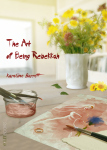 Good morning, WFW! It’s pouring here today, with thunder and lightening that sounds more like the implosion of buildings across the street than heavenly bowling. The only good thing about it? IT’S NOT SNOW!
Good morning, WFW! It’s pouring here today, with thunder and lightening that sounds more like the implosion of buildings across the street than heavenly bowling. The only good thing about it? IT’S NOT SNOW!
It’s all perspective.
And that’s what we have here today, author Karoline Barrett offering her perspective on being a debut author with a new kind of publisher. Some are calling them hybrid publishers, I think Karoline is just calling hers fabulous! ( Like with anything in publishing, please do your due diligence before signing with anyone or any company.)
Now, please welcome Karoline Barrett to WFW!
Amy xo
WFW Interview: Karoline Barrett, author of THE ART OF BEING REBEKKAH
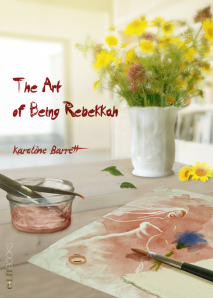 Amy: Tell us how and when you decided to write THE ART OF BEING REBEKAH.
Amy: Tell us how and when you decided to write THE ART OF BEING REBEKAH.
Karoline: First, thank you so much for having me on your blog. My novel, which is about a Jewish woman who discovers her husband has a dark side, started as a short story about four years ago that never got published. I’ve always loved reading and dreamed of being an author. I decided to take that short story and expand it into a novel; I loved the characters in it and wanted to see where they ended up.
Amy: Would you share with us your journey to publication?
Karoline: I finished THE ART OF BEING REBEKKAH in December 2012 and began querying agents in January 2013. I got a handful of requests for my manuscript, but no takers. I queried Frances Black at Literary Counsel in July 2013 and she signed me in October 2013.
Amy: Your publisher isn’t traditional, but you didn’t self-publish. Please let us know about your process with E-Lit Books.
Karoline: E-lit Books was started by Literary Counsel and DJC Communications. They take care of every aspect of publishing their authors’ books, including the cover design. My agent and I brainstormed cover ideas, and my cover was then designed by illustrator Martin Blanco. E-Lit Books are very involved in marketing and public relations; they don’t publish your book then forget all about you. Books published by E-Lit Books can be ordered by bookstores as well as ordered online from Amazon, IndieBound, Kobo, and Barnes & Noble.
(Note to readers: I was published by a “big” traditional publisher and was not forgotten about after my debut launched, everyone’s experience is different. As usual, YMMV – your mileage may vary.)
Amy: What’s the biggest surprise having your novel published with E-Lit Books that you didn’t expect? (Good or Bad – or maybe both!)
Karoline: How hard they work promoting their authors and books, and how supportive they are when we have a book signing, author event, or guest on a blog.
Amy: What’s your definition of women’s fiction?
Karoline: Character driven coming-of-age fiction focusing on womens’ life experiences, growth, key relationships, and turning points.
Amy: What’s your best advice for an aspiring author who’s hitting that line between hope and frustration?
Karoline: Persevere and be patient. Whether you decide to pursue agent representation or self-publish, do your homework, be professional, and believe in your book and yourself.
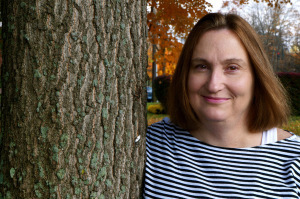 Karoline Barrett was born in upstate New York and has lived in South America, Indiana, Florida, Pennsylvania, and New Jersey. At the moment, she lives in a small Connecticut town with her husband. When she’s not writing, she loves reading, spending time by the water, traveling, and doing anything that has nothing to do with math. She’s currently working on her second novel, a cozy mystery set in upstate N.Y.
Karoline Barrett was born in upstate New York and has lived in South America, Indiana, Florida, Pennsylvania, and New Jersey. At the moment, she lives in a small Connecticut town with her husband. When she’s not writing, she loves reading, spending time by the water, traveling, and doing anything that has nothing to do with math. She’s currently working on her second novel, a cozy mystery set in upstate N.Y.
Website: Karoline Barrett
Facebook: Karoline’s Facebook author page
Twitter: @KarolineBarrett
Pinterest: Pinterest


April 1, 2014
A WFW Book Review: Beach Plum Island by Holly Robinson
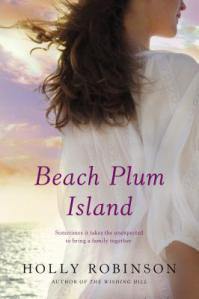 As I’m awaiting edits on my second novel from my editor, guess what I’m doing? Writing another story. Now, that may seem presumptuous. It may seem crazy. Why not take a break? Well, the more I write, the more I write. Does that make sense? It would certainly make sense to author Holly Robinson, my friend, and one of the busiest writers I know. Holly is a novelist, ghost writer, freelancer, and award-winning journalist. In addition to those things, she’s a wife, mom of FIVE, and dedicated daughter. So when I think I’M SO BUSY and my thoughts jumble, I conjure up a vision of Holly doing everything she does. And then I get back to work.
As I’m awaiting edits on my second novel from my editor, guess what I’m doing? Writing another story. Now, that may seem presumptuous. It may seem crazy. Why not take a break? Well, the more I write, the more I write. Does that make sense? It would certainly make sense to author Holly Robinson, my friend, and one of the busiest writers I know. Holly is a novelist, ghost writer, freelancer, and award-winning journalist. In addition to those things, she’s a wife, mom of FIVE, and dedicated daughter. So when I think I’M SO BUSY and my thoughts jumble, I conjure up a vision of Holly doing everything she does. And then I get back to work.
Today, Holly’s second novel with NAL is out for the world to enjoy. BEACH PLUM ISLAND is her second novel with this publisher, but her third novel, and fourth book. Holly’s memoir, THE GERBIL FARMER’S DAUGHTER was published in 2010 by Broadway Books, and Holly self-published her novel, SLEEPING TIGERS, just as she got a contract THE WISHING HILL from NAL. And, now Holly is working on her third novel for NAL, LAKE UTOPIA, due out in 2015.
But back to BEACH PLUM ISLAND!
I read an early copy of Holly’s novel and was thrilled to offer this blurb!
“In Beach Plum Island, Holly Robinson’s rich details transport you to picturesque New England and right into the core of the conflicted Barrett family. Robinson tugs at your emotions from the viewpoint of the three complex and very different Barrett sisters: Ava, Elaine, and Gigi, through whom the author deftly explores grief, secrets, and shunned family ties. This story reveals the way people become stronger when they are together rather than apart, and proves that it is never to late to become a family. Beach Plum Island is a triumphant family saga filled with heart and hope. I couldn’t put it down!” –Amy Sue Nathan, author of The Glass Wives
What I loved about BEACH PLUM ISLAND is similar to what I loved about THE WISHING HILL. Holly has a way of story telling, through three Points Of View (THREE!) that I find masterful. The story keeps going, and I, the reader, get to involve myself on multiple levels because of these three POV characters.
As mentioned above, BEACH PLUM ISLAND is about three sisters. They figure out a family mystery after their father dies, and in the process, also figure out their own family dynamics. Ava, Elaine, and Gigi are sisters who have their own story lines, their own problems, but Holly has a way to make sure that nothing gets lost in the individual character—that everything has its place. The setting, the Massachusetts shoreline, is vivid and unusual and real! The best part of the setting is that it’s familiar to Holly (it’s where she lives) and therefore she is able to make it familiar for her reader.
Now, back to that POV thing. Writers are often asking for suggestions about works of women’s fiction that exemplify certain things they want to learn about in their writing. It’s always difficult for me to pull a book title out of a hat—so here’s my suggestion. If you want a good read about a sisters finding their place in the world that encompasses their unusual family, and want, in the reading process, to see how an author deftly pulls off story telling from three points of view—then get acquainted with Holly Robinson’s BEACH PLUM ISLAND. I can say the same for THE WISHING HILL as well.
But it’s LAUNCH DAY for BEACH PLUM ISLAND! So, CONGRATULATIONS, HOLLY! Thanks for another great read!
Find out more about Holly here: http://authorhollyrobinson.com/ (She has great posts on writing!)
Buy BEACH PLUM ISLAND here and here or at your local bookstore!
Want to read more about Holly? Here’s the WFW interview from last year, about THE WISHING HILL.
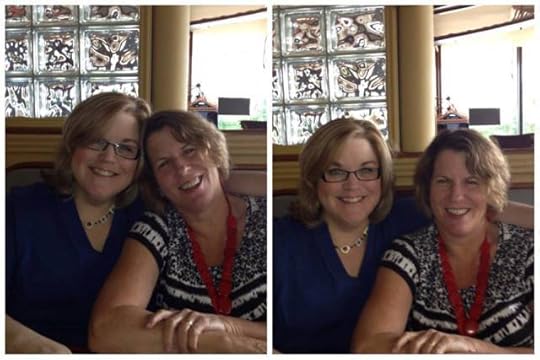
Me and Holly—July 2013


Women's Fiction Writers
- Amy Sue Nathan's profile
- 543 followers







